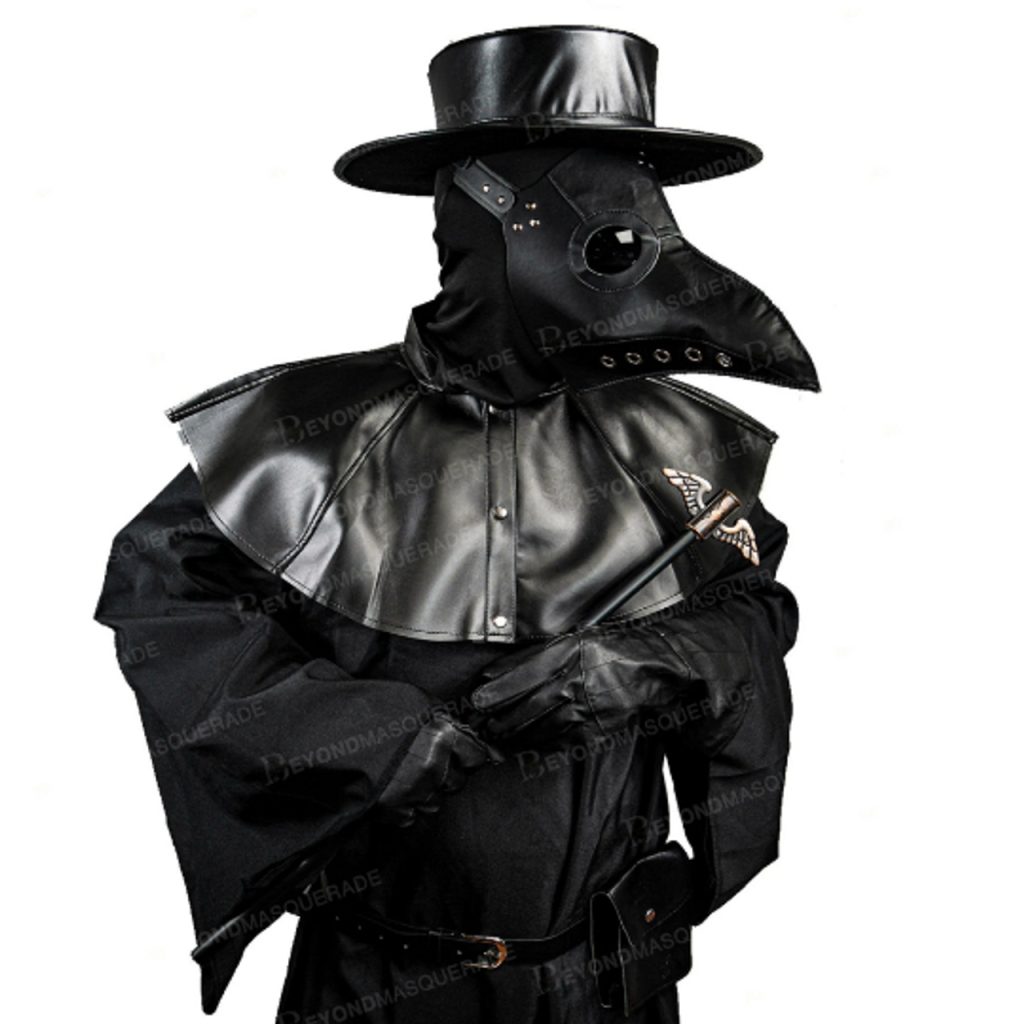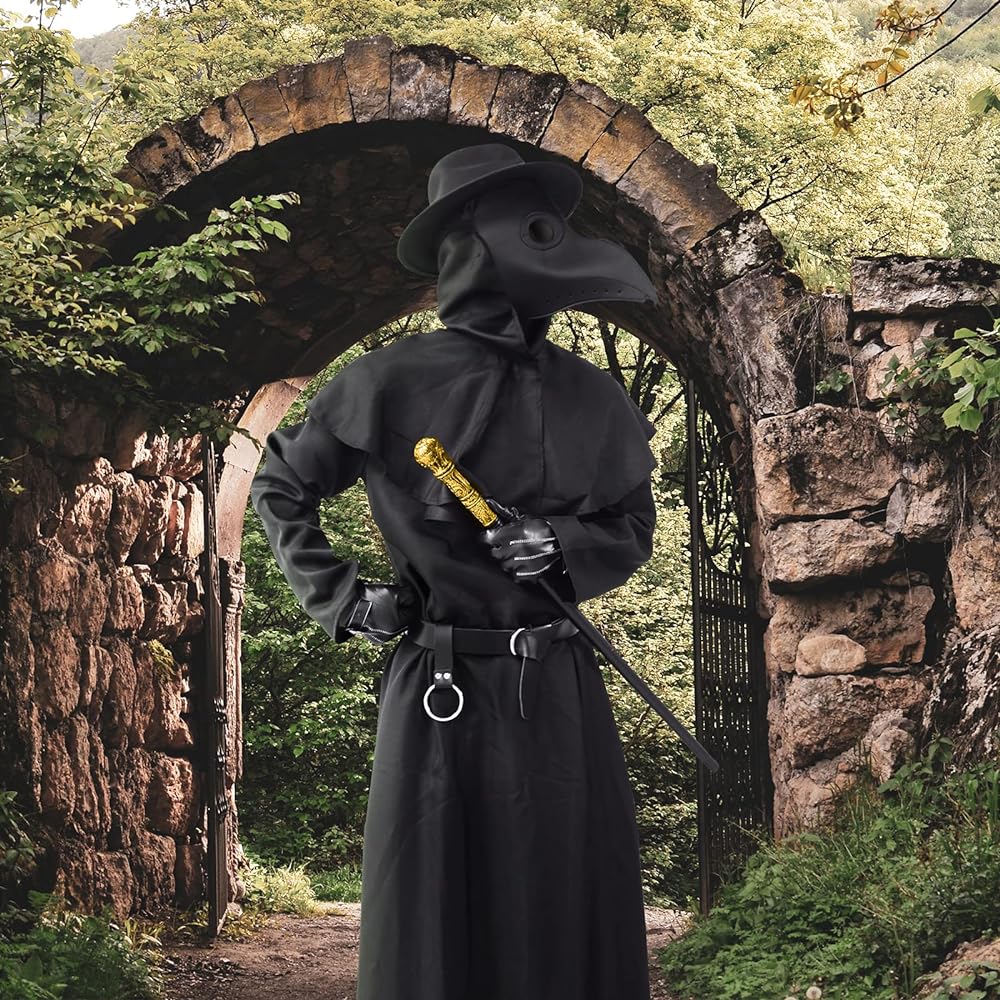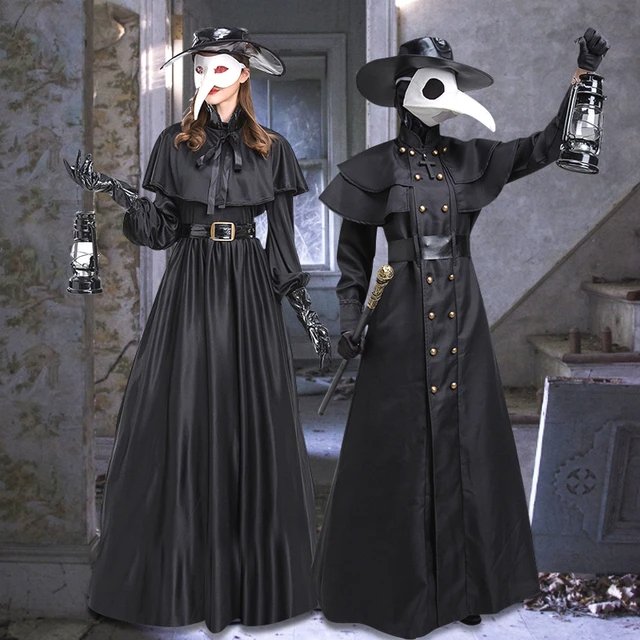Introduction to the Plague Doctor Costume
The plague doctor costume has become an iconic symbol of the Black Death and the bubonic plague that ravaged Europe during the 14th century. Characterized by its distinctive beaked mask, dark robes, and wide-brimmed hat, the costume was designed to protect physicians from the diseases they believed to be transmitted through foul air or “miasma.” While the costume’s eerie appearance has made it a popular choice for Halloween and horror themes today, it also serves as a haunting reminder of a tumultuous period in history. In this article, we will delve into the origins, design, and cultural significance of the plague doctor costume, shedding light on its role in medical history and modern interpretations.
Understanding the purpose behind the costume helps to appreciate the struggles and fears faced by people during the plague years. The costume’s design reflects the medical theories of the time while highlighting the societal impacts of epidemics. By exploring the history behind this fascinating garment, we can comprehend its lasting influence on art, literature, and popular culture.
The Historical Background of Plague Doctors
The Emergence of Plague Doctors
During the peak of the bubonic plague in the 14th century, many cities faced a desperate need for medical practitioners to treat the afflicted. Fortunately, this led to the emergence of plague doctors, specifically trained to care for patients during epidemics. Initially, regular physicians were reluctant to treat those with the plague due to the perceived dangers; this opened the door for a new class of doctors specializing in handling infectious diseases.
Plague doctors operated under a variety of public health regulations, often hired by municipalities. They were responsible not only for treating patients but also for documenting fatalities and observing quarantine measures. Most importantly, they provided a semblance of hope and care to communities ravaged by fear and uncertainty. Their role solidified the need for specialized medical practitioners during times of crisis, paving the way for future public health initiatives.

The Bubonic Plague and Its Consequences
The Black Death, which struck Europe between 1347 and 1351, claimed the lives of millions, leading to societal upheaval and fear. Plague doctors answered a critical need during this catastrophic period, yet the understanding of disease transmission was primitive. Physicians believed that “bad air” or miasmas were the primary cause of illnesses, which ultimately shaped the design of the plague doctor costume.
The widespread impact of the plague brought attention to the inadequacies of existing medical knowledge. As the epidemic persisted, people grew desperate for protection and cures. Plague doctors, clad in their distinctive costumes, became emblematic figures of this dark period. This led to a growing interest in public health measures and laid the groundwork for more advanced medical practices. Understanding the historical context of plague doctors enriches our comprehension of their unique costumes and their roles in society.
The Design of the Plague Doctor Costume
Distinctive Features of the Costume
The plague doctor costume comprises several key elements designed with practicality and protection in mind. The most recognizable feature is the long, beaked mask, often made from leather or other materials. This mask was filled with aromatic substances like lavender or mint, intending to purify the “bad air” the physicians believed to be the cause of disease. The beak-like shape allowed for breathing while also keeping the physician at arm’s length from infected individuals.
Additionally, the costume included a long, dark cloak, which served not only as a protective barrier against contagion but also as a means to obscure the doctor’s identity. Wide-brimmed hats were worn to denote the wearer’s profession, marking plague doctors as figureheads of authority in times of crisis. Gloves and boots were also important parts of the outfit, further minimizing skin contact with infected patients. Understanding the design elements of the costume helps appreciate the efforts taken to combat the threat of illness during a time of medical ignorance.

Materials and Construction
The materials used in the construction of plague doctor costumes were chosen not only for their protective qualities but also for availability and practicality. Leather was a preferred choice due to its durability and water-resistant properties, offering some degree of protection against bodily fluids while being relatively easy to clean.
Plague doctor costumes were often hand-sewn, leading to variations based on geographical location and available materials. The integration of various materials highlighted the improvisational nature of practitioners working within limited knowledge and resources. While modern interpretations of plague doctor costumes often involve synthetic or theatrical materials for aesthetic appeal, understanding the historical craftsmanship adds depth to our perception of the costume’s significance.
The Cultural Impact of Plague Doctor Costumes
Symbolism in Art and Literature
The plague doctor costume has transcended its historical role, emerging as a powerful symbol in art and literature. In various works, the beaked mask and dark cloak have become synonymous with themes of death, fear, and pestilence. Artists and writers have drawn on the imagery of plague doctors to evoke emotional responses, using the costume to reflect societal anxieties surrounding health, mortality, and the unknown.
In modern interpretations, the plague doctor often appears in horror films, music videos, and literature, where it embodies a sense of dread and foreboding. Its usage extends beyond historical representation, tapping into contemporary fears of pandemics and illness. These cultural portrayals reaffirm the costume’s lasting impact on our collective consciousness, from its origins during the Black Death to its embrace in popular culture today.
The Plague Doctor in Modern Times
In recent years, the plague doctor costume has gained significant popularity during Halloween and other themed events. Its striking appearance and haunting history have drawn people to embrace its role in dark aesthetics. Costume designers often reinterpret historical elements with modern flair, allowing the costume to evolve while still paying homage to its roots.
Social media platforms have contributed to this trend, where enthusiasts showcase creative interpretations of plague doctor costumes. Artistic reimaginations blend historical accuracy with modern influences, encouraging conversations about the intersection of history, fear, and creativity. As society grapples with contemporary health crises, the enduring fascination with the plague doctor costume reminds us of our shared experiences and cultural narratives surrounding disease and mortality.

The Role of Plague Doctors in Public Health
Influence on Modern Medicine
Plague doctors played a vital role in shaping public health responses that continue to influence medical practices today. The need for specialized medical practitioners during times of crisis led to the establishment of institutions dedicated to studying infectious diseases and designing protocols for outbreak management. This laid the groundwork for the modern medical field’s growth in knowledge and standards of care.
Essentially, the efforts of plague doctors in the face of overwhelming odds led to significant advancements in public health measures, including quarantine protocols and the establishment of health departments. Understanding their contributions provides insight into how historical figures can shape modern medicine. The lessons learned from their experiences inform contemporary responses to epidemics and public health crises.
Ongoing Discussions in Public Health
The symbolism carried by the plague doctor costume continues to provoke important discussions about public health, disease prevention, and preparedness. In light of recent global health challenges, the image of the plague doctor serves as a reminder of the consequences of neglecting public health measures. Awareness of history encourages contemporary practitioners and policymakers to prioritize preparedness and community well-being.
Moreover, the legacy of the plague doctor highlights the vital role of healthcare professionals in navigating crises, emphasizing the importance of trust and communication between practitioners and communities. By analyzing the historical context of the plague doctor costume, we can draw parallels to modern challenges in public health, renewing our commitment to learning from the past as we face future unknowns.
Conclusion: The Legacy of the Plague Doctor Costume
In conclusion, the plague doctor costume is much more than a haunting image from history; it embodies the struggles and resilience of humanity during one of its darkest times. The unique design, crafted under the constraints of understanding but developed out of necessity, serves as a testament to the human spirit’s adaptability. From the origins of plague doctors during the Black Death to modern adaptations in art and culture, the costume continues to captivate and inspire.
Its cultural impact extends beyond fear and darkness; it offers valuable lessons in public health, community responsibility, and the importance of learning from history. As we navigate an increasingly interconnected world, the legacy of the plague doctor costume can motivate us to remain vigilant, informed, and empathetic as we face contemporary public health challenges. Through understanding this fascinating piece of history, we connect with the past while embracing the complexities of the present.
